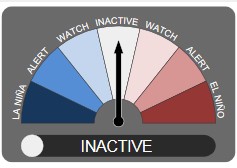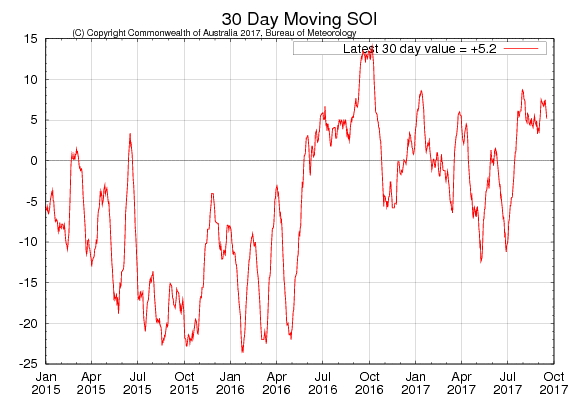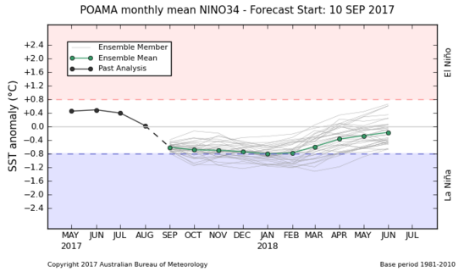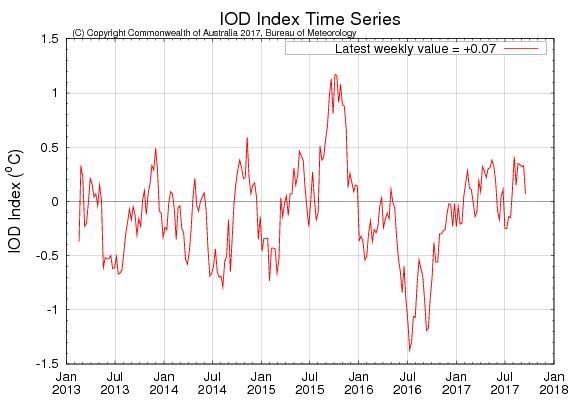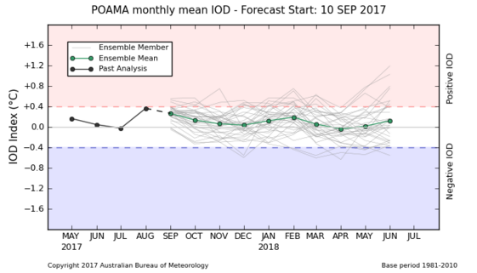Northern Territory Seasonal Outlook
As at September 2017
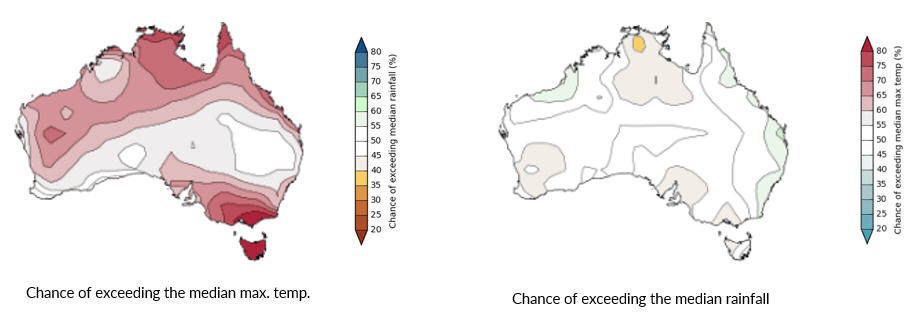
Figure 9. Chance of rainfall and maximum temperature maps for October to December 2017. Sourced from the Australian Bureau of Meteorology
The national outlook for October to December 2017 indicates that:
- Drier than average conditions are expected across much of the Northern Territory.
- Warmer than average days and nights are more likely across the entire Northern Territory.
Climate influences from the Indian and Pacific oceans are likely to be competing, with a weak drying influence from the Indian Ocean potentially cancelling out a slightly wet influence from the Pacific Ocean. In addition to the natural drivers such as the El Niño–Southern Oscillation and the IOD, Australian climate patterns are being influenced by the long-term increasing trend in global air and ocean temperatures.
| Seasonal Indicators | Comments (sourced from the Australian Bureau of Meteorology) | |
|---|---|---|
El Niño Southern Oscillation (ENSO) http://www.bom.gov.au/climate/enso/ Current outlook: Neutral ENSO status
Current status: INACTIVE | ENSO remains neutral, but tropical Pacific continues to cool. Sea surface temperatures (SSTs) have steadily cooled over the central and eastern tropical Pacific for the past two months, but remain well within the neutral ENSO range. Temperatures at and below the surface are now slightly cooler than average. Other indicators of ENSO, such as the Southern Oscillation Index (SOI), cloudiness near the Date Line and trade winds also remain at neutral levels. Most international climate models surveyed suggest the tropical Pacific Ocean may cool further, but persist at ENSO-neutral levels for the rest of 2017. |
|
Current outlook: Neutral | IOD also neutral. Most of the climate models surveyed indicate that the IOD will remain neutral during Spring. However, two out of the six models suggest a positive IOD may develop during Spring. A positive IOD is typically associated with below average Spring rainfall over southern and central Australia. If a positive IOD eventuated it would likely be short-lived as IOD events typically break down by December as the monsoon trough moves south towards Australia. |
|
Give feedback about this page.
Share this page:
URL copied!
